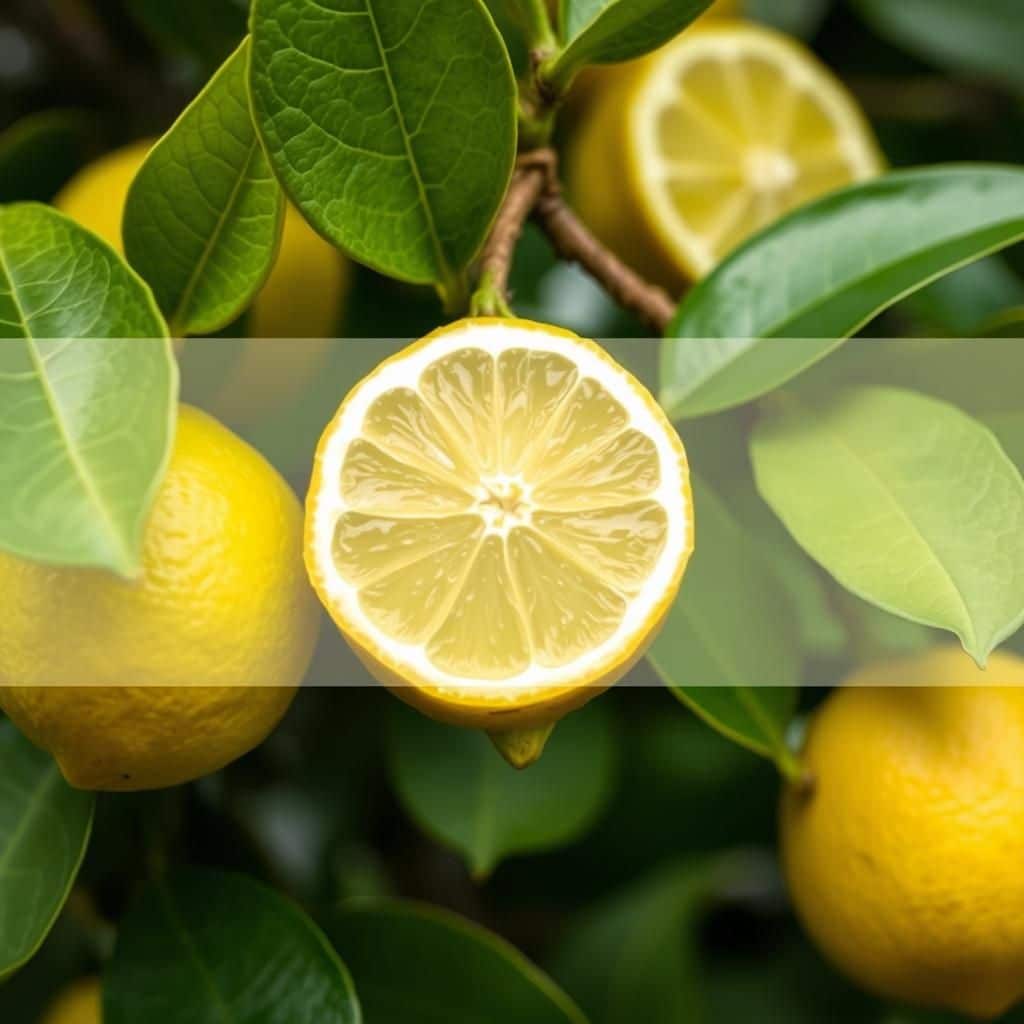Understanding the Lime and Lemon Tree Difference: Key Features and Care Tips

Citrus trees are a delightful addition to any garden, offering vibrant fruits and aromatic foliage. Among these, lime and lemon trees stand out, each with its own unique characteristics and care requirements. Understanding the differences between these two popular citrus varieties is essential for gardeners and enthusiasts alike. This article will explore key features that distinguish lime trees from lemon trees, including their fruit, foliage, and growth habits. Additionally, we will provide essential care tips to ensure your citrus trees thrive, enabling you to enjoy abundant harvests and lush greenery in your outdoor space.
Understanding the Differences Between Lime and Lemon Trees
Lime and lemon trees belong to the same family, Rutaceae, yet exhibit distinct characteristics that set them apart. The lime tree typically produces smaller, rounder fruits that are green when ripe, while the lemon tree yields larger, elliptical fruits that are bright yellow. Lime trees, such as the Persian or Tahiti lime and the Key lime, thrive in warmer climates and have a more intense flavor, often described as tart and bitter. Conversely, lemon trees, including the Eureka and Lisbon varieties, prefer slightly cooler temperatures and are known for their zesty and refreshing taste. Furthermore, the leaves of lime trees are generally smaller and darker, while lemon trees have larger, lighter green leaves, creating a noticeable distinction in their foliage as well.
Fruit Characteristics
The most evident difference between lime and lemon trees is their fruits. Limes are usually smaller than lemons, with a diameter of about 1 to 2 inches. They are typically green and can be used in beverages, cooking, and garnish. Lemons, on the other hand, can reach up to 4 inches in diameter, have a vibrant yellow color, and are renowned for their juice, which is widely used in culinary dishes, cocktails, and desserts. The subtle taste differences further distinguish these fruits, with limes being more intense and lemons providing a brighter, more tangy flavor.
Tree Appearance
In terms of physical appearance, lime and lemon trees differ in both height and shape. Lime trees are generally more compact, often reaching a height of 6 to 10 feet, with a dense canopy. They tend to have a bushy, rounded form. Lemon trees, conversely, can grow taller, typically ranging from 10 to 20 feet high, exhibiting a more upright growth habit. Their branches have a more spreading nature, allowing for greater light exposure and potentially higher fruit yields. Additionally, the bark and leaves' colors can vary, with lime leaves being darker and more glossy compared to their lemon counterparts.
Cultural Needs
Both lime and lemon trees require specific environmental conditions to thrive. Lime trees prefer a warmer climate, thriving in temperatures above 50°F (10°C) and are particularly sensitive to frost. They flourish in well-draining soil and need a consistent watering schedule. Lemon trees also enjoy warm environments, but they can tolerate slightly cooler conditions and benefit from regular pruning to enhance air circulation and fruit production. Adequate sunlight is crucial for both types, as they need at least 8 hours of direct sunlight daily to yield quality fruits.
Growth Rate and Lifespan
Lime trees typically have a faster growth rate compared to lemon trees, with the potential to bear fruit within 3 to 4 years after planting. Lemon trees, however, may take about 4 to 6 years to start producing fruit. In terms of lifespan, lime trees can live for about 10 to 15 years, while lemon trees can thrive for up to 50 years under ideal conditions. This longevity can impact gardening decisions, especially for those looking to have a long-term fruit source.
Pest and Disease Resistance
Lime and lemon trees are susceptible to similar pests and diseases, but lime trees tend to be more vulnerable to certain pests, such as aphids and spider mites. Lemon trees are slightly more resilient against diseases, including root rot and citrus canker. However, both plants need regular monitoring and care to ensure their health and productivity. Proper cultural practices, including pruning and providing adequate water, can help mitigate these issues, ensuring that both lime and lemon trees can flourish in gardens and orchards.
| Characteristic | Lime Trees | Lemon Trees |
|---|---|---|
| Fruit Size | 1-2 inches | Up to 4 inches |
| Fruit Color | Green | Yellow |
| Tree Height | 6-10 feet | 10-20 feet |
| Growth Rate | Faster | Slower |
| Lifespan | 10-15 years | Up to 50 years |
How do you tell if it's a lemon or lime tree?

To distinguish between a lemon and a lime tree, several key characteristics can be analyzed. While both trees belong to the same family (Rutaceae) and share some similarities, there are notable differences that can help identify each type. Here are some observations to consider:
Leaf Shape and Size
The leaves of lemon and lime trees vary in shape and size, which can be a good indicator for identification.
- Lemon tree leaves are generally larger, measuring about 4 to 6 inches in length and have a more oval or elliptical shape.
- Lime tree leaves are smaller, typically around 2 to 4 inches long, and tend to be more pointed and narrower.
- Both leaf types are glossy green, but lime tree leaves may appear a bit hairier.
Fruit Characteristics
The fruits produced by lemon and lime trees are significantly different in appearance and taste.
- Lemons are larger, typically about 2 to 4 inches in length, and have an elliptical shape with a bright yellow color when ripe.
- Limes are usually smaller, about 1 to 2 inches in diameter, rounder, and can be green or yellow depending on the variety.
- Lemon fruit has a more tart and tangy flavor, while limes can be more bitter or less sour.
Tree Size and Growth Habit
The physical characteristics of the trees themselves can also indicate whether it is a lemon or lime tree.
- Lemon trees tend to grow larger, reaching heights of up to 20 feet or more, and can have a more spreading growth habit.
- Lime trees are generally smaller, often ranging from 6 to 12 feet in height, and may have a more compact growth style.
- The bark of lemon trees can be slightly smoother compared to the more textured bark of lime trees.
Flower Appearance
Both trees can produce flowers, but they have distinct characteristics you can observe.
See also:
- Lemon tree flowers are typically larger, with white petals and hints of purple in the center, and are more fragrant.
- Lime tree flowers are smaller but also have white petals, usually less fragrant compared to lemon flowers.
- Both trees produce flowers that are hermaphroditic, but the scent and size can give away their botanical identity.
Growing Conditions
The environmental preferences of lemon and lime trees can also differ, influencing how they flourish.
- Lemon trees prefer a slightly cooler climate and can tolerate more drought conditions.
- Lime trees thrive in warmer, more humid environments and require more frequent watering.
- Both types of trees need well-draining soil, but their specific conditions can hint at their species.
How to tell the difference between lemon and lime?

To differentiate between lemons and limes, it's essential to consider several factors, including appearance, taste, aroma, and usage. Both fruits belong to the citrus family, but they have distinct characteristics that make them easily distinguishable.
Physical Appearance
The most immediate way to tell the difference between lemons and limes is through their physical appearance. Here are some key aspects to observe:
- Color: Lemons are typically bright yellow, while limes are green, though some varieties of limes can turn yellow when fully ripe.
- Shape: Lemons tend to be oval and larger, generally measuring about 3 to 4 inches in length. Limes are smaller and round or oval-shaped, averaging around 1 to 2 inches.
- Skin Texture: Lemon skin is usually smooth and slightly textured, whereas lime skin is often thinner and can have a bumpy surface.
Taste Profile
The taste of lemons and limes is another defining characteristic. Each fruit has a unique taste profile:
- Lemon Juice: Lemon juice is generally more acidic and has a sharp tangy flavor, making it refreshing and sour.
- Lime Juice: Lime juice tends to be less acidic, with a more bitter, zesty flavor, often perceived as more aromatic than lemon juice.
- Overall Flavor: While both fruits provide tartness, lemons are sweeter, and limes offer a more intense, bitter taste.
Aromatic Differences
Aroma is a subtle yet significant factor when distinguishing between lemons and limes. The aromatic differences are:
- Scent of Lemons: Fresh lemons have a bright, fresh, and sweet citrus aroma that is uplifting.
- Scent of Limes: Limes possess a more complex fragrance, often described as herbal or floral, which enhances their zesty flavor.
- Essential Oils: Lemon essential oil has a cleaner and sweeter note, while lime essential oil tends to be more energizing and invigorating.
Culinary Uses
Lemons and limes are used differently in various culinary applications. Understanding their uses can also help you distinguish between the two:
- Lemon Uses: Lemons are commonly used in marinades, salad dressings, desserts, and beverages like lemonade.
- Lime Uses: Limes are essential in Mexican, Thai, and Indian cuisines, often used in drinks like margaritas and as a garnish for various dishes.
- Preservation: Lemon juice is often used to preserve fruits and prevent browning due to its acidity.
Health Benefits
Both lemons and limes offer various health benefits, which can additionally inform their usage in diets:
- Vitamin C Content: Both fruits are high in vitamin C, though lemons contain slightly more than limes, aiding in immune support.
- Antioxidants: Lemons and limes are rich in antioxidants, which may help combat oxidative stress in the body.
- Hydration: Both fruits can enhance hydration when added to water, making them popular choices for refreshing drinks.
Do all limes turn into lemons?

The short answer is no, limes do not turn into lemons. Limes and lemons are distinct citrus fruits belonging to different species. Limes are generally smaller and have a green skin, while lemons are larger with a bright yellow skin. Here, we will delve into the differences, characteristics, and classifications of these fruits to provide a clearer understanding.
Differences Between Limes and Lemons
Limes and lemons have various differences that set them apart biologically and culinarily.
- Color: Limes are typically green, while lemons are yellow.
- Size: Lemons are generally larger than limes.
- Taste: Limes have a more bitter flavor compared to the tartness of lemons.
Botanical Classification
From a botanical perspective, limes and lemons belong to different species within the genus Citrus.
- Limes: Usually classified as Citrus aurantiifolia for key limes and Citrus latifolia for Persian limes.
- Lemons: Mostly classified as Citrus limon.
- Hybridization: Both fruits can be involved in various hybridization, but they remain distinct.
Culinary Uses of Limes and Lemons
In culinary practices, both limes and lemons serve unique purposes and are often used in different cuisines, despite some overlapping uses.
See also:
- Drink Mixes: Limes are prevalent in cocktails like margaritas, while lemons are used in lemonade.
- Flavoring: Lemons are often used in salad dressings, whereas limes are favored in marinades for their zest.
- Preservation: Limes are used in many preservation techniques, especially in Mexican and Southeast Asian cuisines.
Nutritional Content
Both fruits have distinct nutritional profiles, providing various vitamins and minerals, but they differ in some specifics.
- Vitamin C: Both are excellent sources, but lemons generally contain more vitamin C than limes.
- Caloric Value: Both fruits are low in calories, but limes may have marginally fewer calories due to their smaller size.
- Antioxidants: Both fruits contain antioxidants, but the profiles of specific compounds vary.
Myths and Misconceptions
There are many myths surrounding limes and lemons, especially regarding their properties and uses.
- Transformation: A common misconception is that limes can transform into lemons, which is biologically impossible.
- Substitutions: While some recipes can use lime juice as a substitute for lemon juice, they will not yield the same flavor profile.
- Storage: Improper storage may lead to spoilage, but will not change one fruit into another.
Can a lime tree also be a lemon tree?

The question of whether a lime tree can also be a lemon tree is intriguing yet complex. In botanical terms, limes and lemons are different species within the same citrus genus, Citrus. A lime tree (Citrus aurantiifolia) and a lemon tree (Citrus limon) are distinct plants with their own specific characteristics and requirements. However, they can share similar growing conditions and may sometimes be confused due to their resemblance.
Differences Between Lime and Lemon Trees
Lime and lemon trees differ in various aspects, including their fruit, appearance, and growth behavior.
- Fruit Characteristics: Limes are typically smaller, rounder, and green, while lemons are larger, oval-shaped, and yellow.
- Flavor Profile: Limes often have a more tart flavor than lemons, which are somewhat sweeter, making them suitable for different culinary uses.
- Tree Growth: Lime trees tend to be smaller and more bushy, while lemon trees can grow taller and have a more upright structure.
Can a Lime Tree Produce Lemons?
Genetically, a lime tree will not spontaneously produce lemons as it is not the same species. However, there are some factors that influence this scenario:
- Grafting Techniques: Through grafting, a technique where a piece of one plant is attached to another, it is possible to have both lime and lemon varieties on the same rootstock.
- Hybrid Varieties: Some hybrid citrus plants are bred for specific flavors and characteristics, merging traits of both limes and lemons.
- Environmental Conditions: While environmental conditions can influence fruit characteristics, it won't change the fundamental species of the tree.
Growing Conditions for Lime and Lemon Trees
Both lime and lemon trees share similar growing conditions, but there are some nuances.
- Climate Preferences: Both trees thrive in warm, sunny climates, but lime trees are typically more sensitive to cold temperatures.
- Soil Requirements: Well-drained, slightly acidic soil is ideal for both, with lime trees often preferring slightly more acidic conditions.
- Watering Needs: Both require regular watering, but lime trees may need more frequent irrigation during dry spells.
Common Pests and Diseases
Both lime and lemon trees can be susceptible to similar pests and diseases, impacting their growth and fruit production.
- Pests: Aphids, scale insects, and whiteflies are common pests that affect both species.
- Diseases: Fungal infections like root rot and bacterial diseases can affect the health of both trees.
- Management Strategies: Integrated pest management practices can help protect both lime and lemon trees from infestations and diseases.
Culinary Uses of Lime and Lemon
Lime and lemon offer unique flavors that enhance various dishes and beverages.
- Flavoring Agents: Both are used to add acidity and brightness to dishes but in different contexts, with lime often used in Latin cuisine and lemon in Mediterranean cooking.
- Beverages: Lime is commonly used in cocktails like margaritas, while lemon is a staple in drinks like lemonade.
- Health Benefits: Both fruits are high in vitamin C and hold different health benefits, contributing to overall wellness.
Questions from Our Readers
What are the main differences between lime and lemon trees?
Both lime and lemon trees belong to the citrus family, but they differ in several aspects. Lime trees generally produce smaller, rounder fruits that are green when ripe, while lemon trees yield larger, oval-shaped fruits that are yellow at maturity. Additionally, lime trees prefer warmer climates than lemon trees, which can tolerate slightly cooler conditions.
How do the fruits of lime and lemon trees differ in flavor?
The flavor of limes is typically more acidic and bitter compared to lemons, which tend to have a sweeter and tangier flavor profile. This difference in taste leads to their varied uses in cooking and beverages, with lemons often used in desserts and limes in cocktails.
Can lime and lemon trees grow in the same environment?
Yes, both lime and lemon trees can thrive in similar growing conditions, such as well-drained soil and plenty of sunlight. However, lime trees generally prefer warmer temperatures, making them more suited for tropical climates, while lemon trees can adapt to slightly cooler conditions.
What are the common uses of lime and lemon in culinary applications?
Limes are primarily used in cocktails, dressings, and savory dishes, contributing a sharp acidity that enhances flavor. On the other hand, lemons are often used in both savory and sweet dishes, such as marinades, desserts, and beverages, where their bright, zesty taste can add depth and freshness.
See also:

If you want to read more articles like Understanding the Lime and Lemon Tree Difference: Key Features and Care Tips, we recommend you check out our Landscaping category.
Leave a Reply
Related Articles